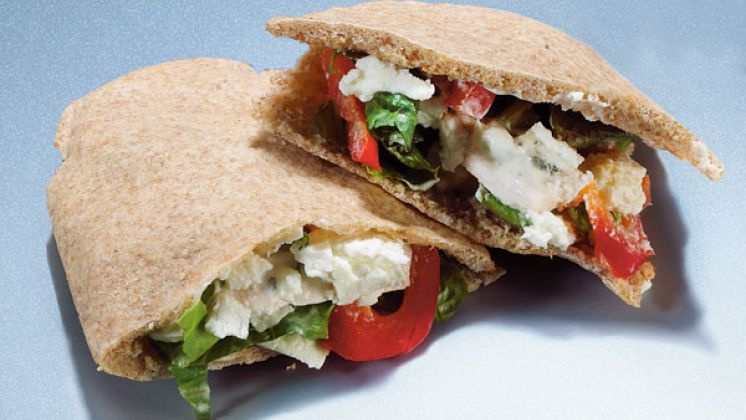Power pitta
Give your muscles a lunchtime boost with this simple yet tasty pitta

In a quest to build more muscle, eating a decent portion of quality protein is vital. That said, you should never overlook the importance of eating the right carbs and vitamins to help you maintain stable energy levels and help your body recover.
To make
Cut a wholemeal pitta bread in half and open. Mix 50g of diced skinless chicken with 2tbsp of tzatziki and season. Add a handful of romaine lettuce, half a diced red pepper and two tablespoons of feta cheese to the pitta before putting in the chicken mix.
Feta cheese
Feta is high in whey protein to stimulate muscle growth. It also has vitamin A, which helps mop up the free radicals produced by exercise, which in excess can damage body tissue. Eating feta after a workout also helps replace the sodium lost through sweating, thanks to its salt content.
Wholemeal pitta
This has fibre, valuable amounts of vitamin E, potassium, iron and B vitamins, which help the body process protein. The carbs will also ensure that you fully replace the energy used in the weights room.
Tzatziki
Like feta, tzatziki is packed with whey protein, and it will also be rapidly digested by your body, to help your muscles grow and repair – as well as adding some fresh flavour to your snack.
Chicken
Rich in high-quality protein, chicken is easy to digest and low in fat. It will complement the amino acids in the tzatziki and feta to help repair and build muscle.
Red pepper
Just one pepper provides 380 per cent of the recommended daily amount of vitamin C, a nutrient crucial for repairing connective tissues and cartilage. Because your body can’t store vitamin C, a daily supply is necessary to help build blood vessels and even new bone cells.
Sign up for workout ideas, training advice, reviews of the latest gear and more.
Romaine lettuce
Loaded with carotenes and other phytonutrients, romaine lettuce is a good source of vitamin K, which works alongside calcium to strengthen and support bone structure.
Coach is a health and fitness title. This byline is used for posting sponsored content, book extracts and the like. It is also used as a placeholder for articles published a long time ago when the original author is unclear. You can find out more about this publication and find the contact details of the editorial team on the About Us page.

